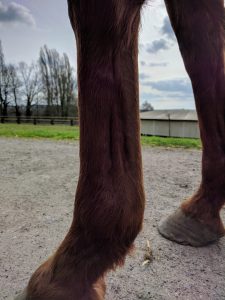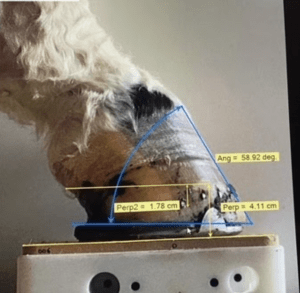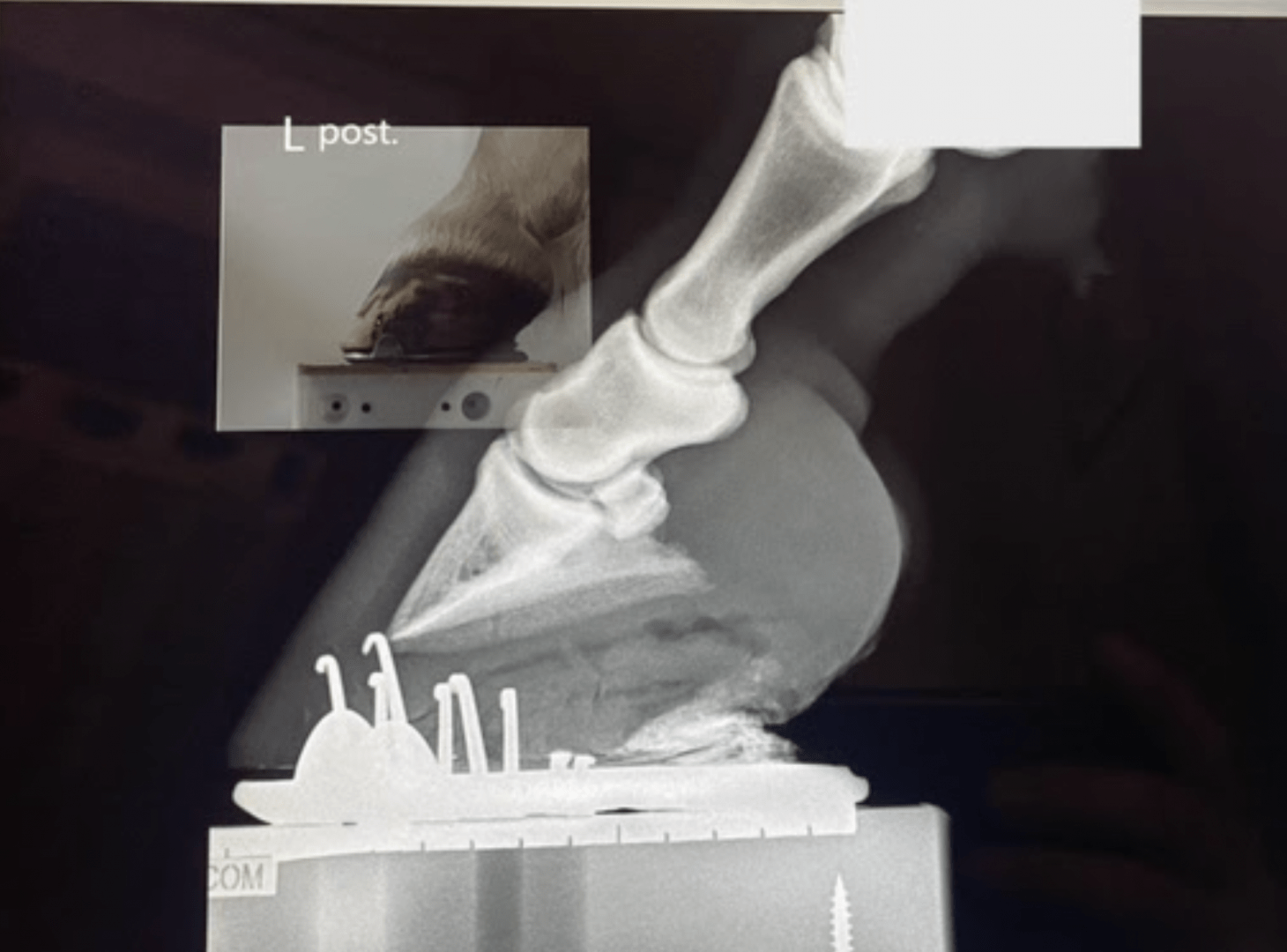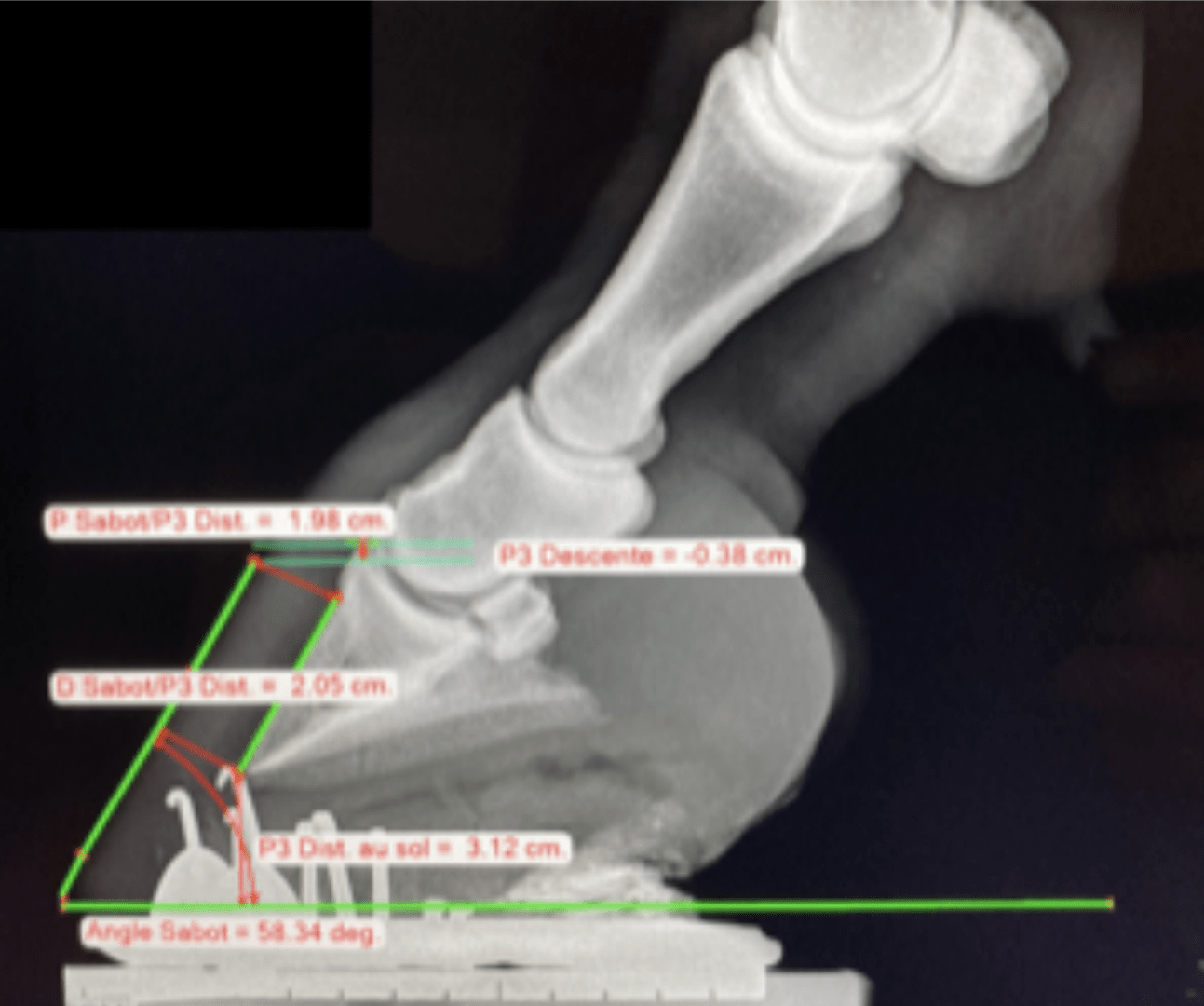Lesions of tendons and ligaments in horses, a brief summary
 Unfortunately, tendon / ligament injuries are quite common in horses.
Unfortunately, tendon / ligament injuries are quite common in horses.
They can be of various origins.
As for example following a sudden and violent trauma (cut by an object such as barbed wire) or even following a repetition of micro-lesions over time, leading to tendinitis in sport horses for example.
These inflammations / lesions can affect the tendons (tendinitis) as well as the ligaments, we speak in this case of desmitis.
Management of a severe form of superficial flexor tendon rupture with associated desmitis, my role as a farrier
A little over a year ago, I took care of a mare suffering from acute rupture of the superficial flexor tendon, associated with desmitis of the annular ligament.
In this type of serious lesion, the veterinary prognosis is very poor. In addition, the treatment protocol to be implemented (immobilization, plaster) can lead to other complications.
Indeed, when one of the limbs no longer rests on the ground, the healthy limb is always put in charge. In particular, this can lead to significant risks of mechanical laminitis for the permanently supported limb (healthy limb).
In this example of a double injury (tendon + ligament), the difficulty is to relieve both the front and the back of the foot at the same time. The rupture of the superficial flexor tendon requires support from the back of the foot while the ligament requires support from the front of the foot.
After consultation with the veterinarian, an improved straight bar shoe was found to be a good option for this kind of atypical and complicated case.
The horseshoe, a support for tendon and ligament injuries
 The improved straight bar shoe with the combination of plate and dual-zone silicone allows the load zone to be changed thanks to the hardness of the silicone.
The improved straight bar shoe with the combination of plate and dual-zone silicone allows the load zone to be changed thanks to the hardness of the silicone.
On the side of the healthy limb, with a significant risk of mechanical laminitis, I made a classic shoe for laminitis (application of a heart bar shoe).
An X-ray was carried out before the implementation of this shoeing protocol in order to carry out an orthopedic inventory of the mare.
This radiographic assessment was coupled with photographic measurements in order to have a good appreciation of my starting point inside and outside of the foot.
In addition to the shoeing, the support of the limb conformation and the angle of the foot are also crucial for the recovery. However, it is necessary to proceed in stages in order to control as much as possible the risk of rupture of the tendons / ligaments and to make changes gradually.
In this situation, a follow-up of the feet by the photo and the parameters of the foot was carried out at each of my interventions (via Metron-Hoof software). At each check, I was able to observe and validate the improvement of the mare in her hoof angles.
Foot monitoring by measurement, a precise witness to the evolution of hooves
This type of shoeing has been applied for more than a year, with control by photos and measurements of the foot parameters almost at every fitting via Metron-Hoof software.
Several ultrasounds were also performed to validate the good healing of the tendons / ligaments in parallel with my shoeing protocol. After a year of rehabilitation, the mare was able to be unshod.
A work on his balance is now set up very slowly with an intervention every 2 to 3 weeks with a regular control of his locomotion.
The follow-up of the feet by the photo and the measurement allowed me to maintain very precise parameters in the angles of the hoof. I was able to work with great precision, to the nearest degree and millimeter. A quantified follow-up helps to keep the hooves in the required angles, to follow the plumbs and participates, in my opinion, in a faster healing in orthopedic cases like this one.
David Grandjean


Article proposed by David Grandjean, Swiss farrier since 2006.
He practices in the cantons of Friborg, Bern, Vaud and Valais.
Phone : 078/909.51.63
Email : info@marechal-forgeron.ch




